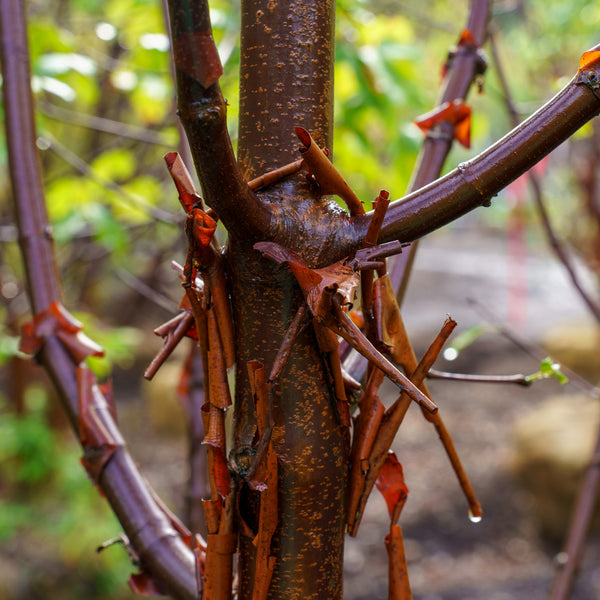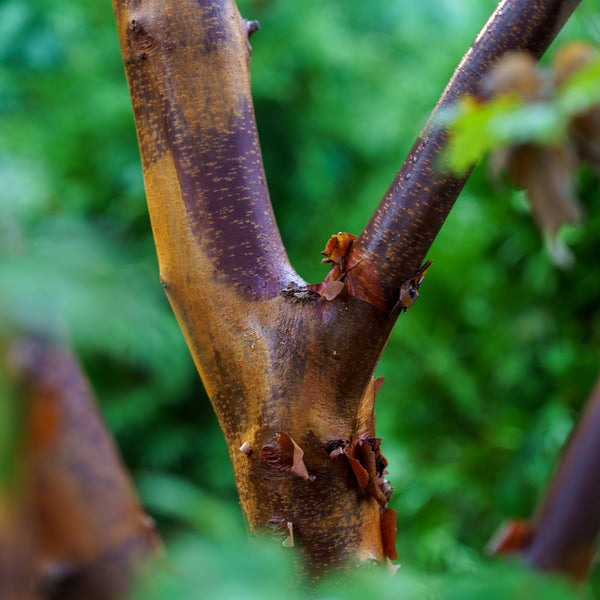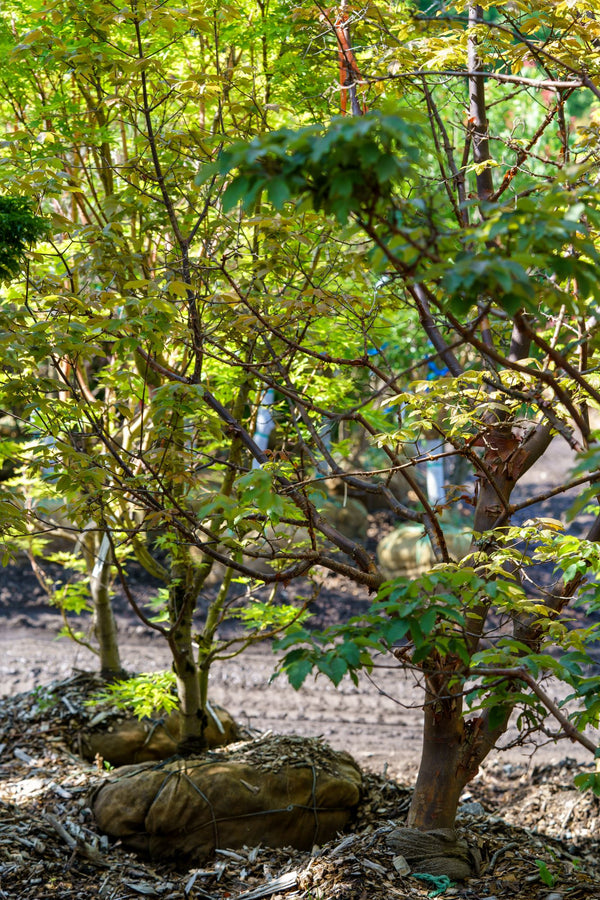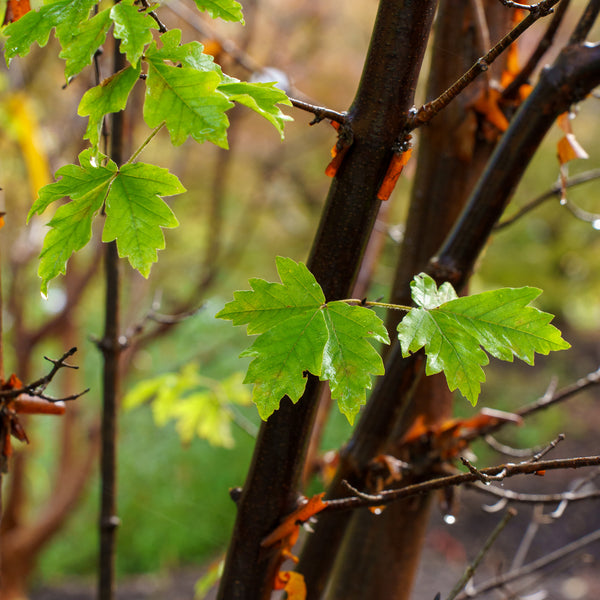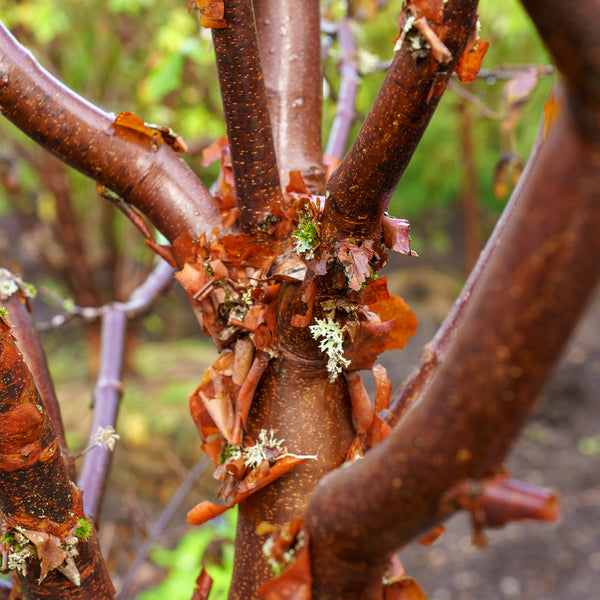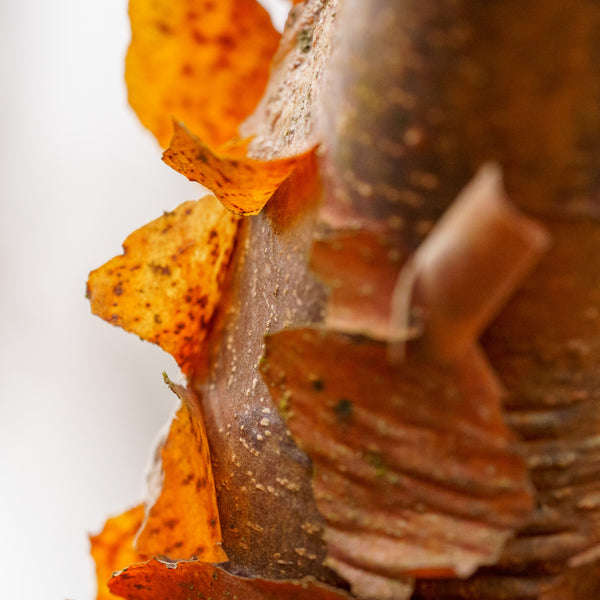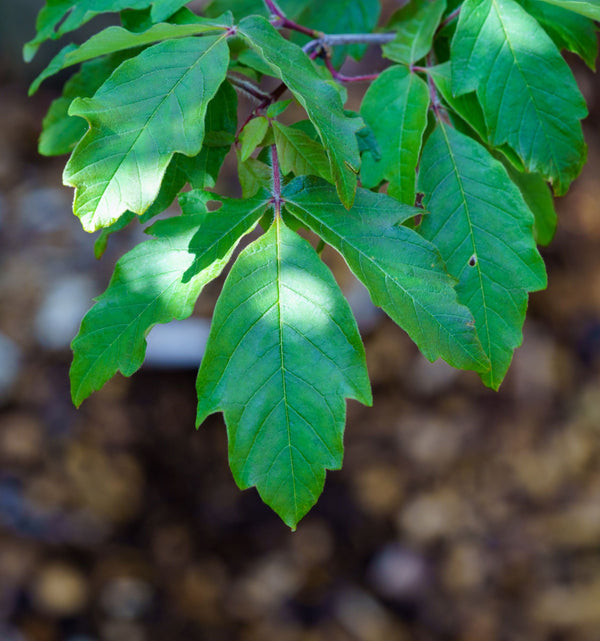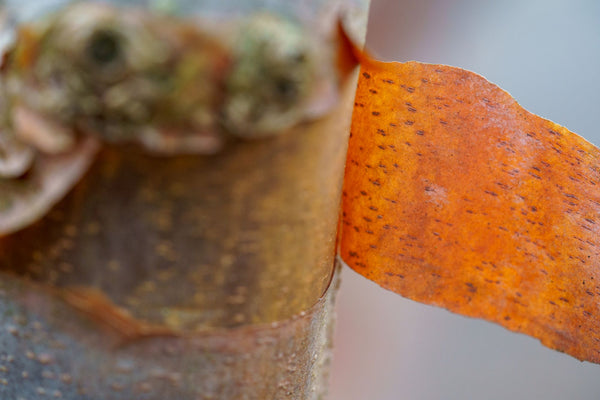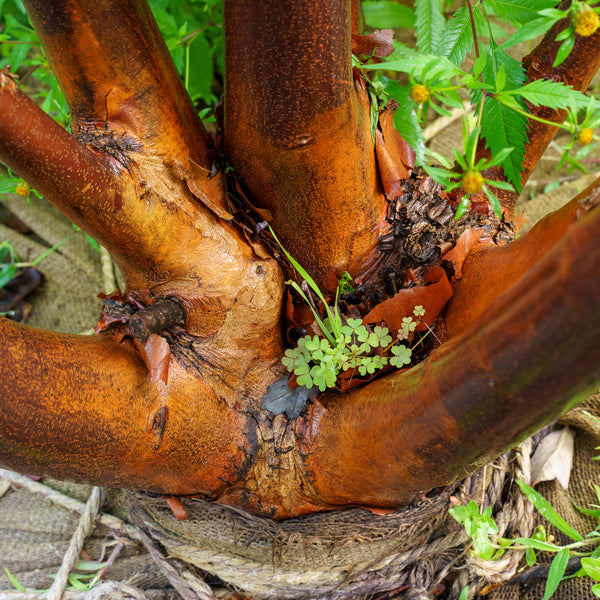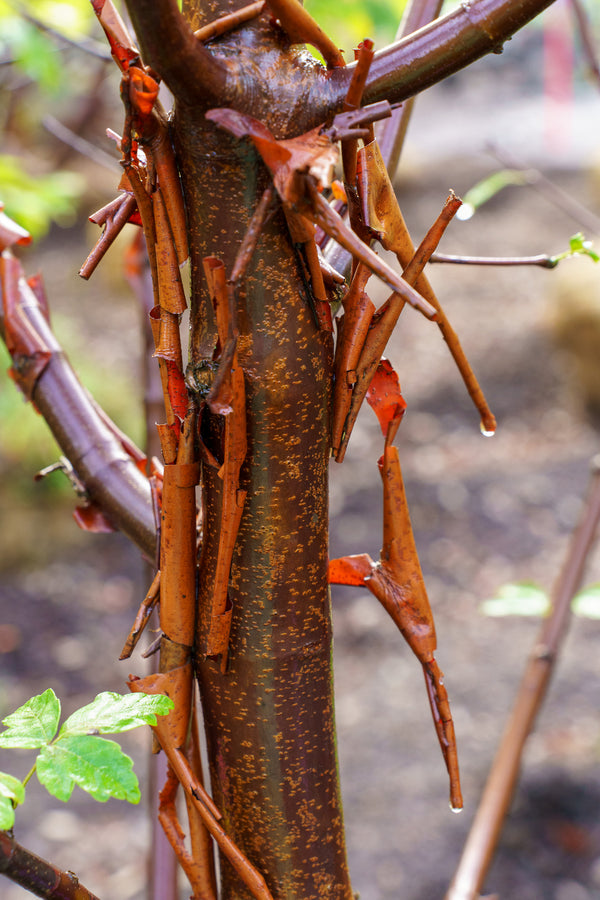Paperbark Maple
Paperbark Maple (Acer griseum)
Paperbark Maple (Acer griseum) is a distinctive small ornamental tree prized for its exfoliating cinnamon-colored bark that becomes a true winter feature and adds year-round character to the landscape. In the growing season, it carries elegant, three-part leaves that create a refined, slightly airy canopy, then finishes with warm fall color that can shift into oranges and reds. Once leaves drop, the peeling bark takes over, curling away in thin sheets and catching light in a way that makes the trunk look almost glowing. With its manageable size and four-season appeal, Paperbark Maple makes an excellent focal point near patios, entry gardens, or anywhere you want a tree that still looks special in winter.
Distinctive Features
The signature feature is the bark, which exfoliates to reveal rich coppery tones that stand out against snow, evergreens, and dark fences. The canopy is typically compact and rounded, with leaves that have a clean texture and a refined look in mixed plantings. Fall color adds another layer of interest, often bringing warm tones that complement the bark and extend the seasonal show. Because it delivers real winter beauty without flowers or fruit, it is a strong choice for landscapes that prioritize structure, texture, and year-round design value.
Growing Conditions
- Sun: Full sun to part shade; afternoon shade is helpful in hotter sites.
- Soil: Moist, well-drained, organic-rich soil is ideal.
- Water: Moderate; keep evenly moist during establishment and water during extended dry spells.
- USDA Hardiness Zones: 4 to 8.
- Habit: Deciduous small tree with a rounded canopy and exfoliating bark.
- Mature Size: About 20 to 30 feet tall and 15 to 25 feet wide.
Ideal Uses
- Focal Point: Place where the peeling bark can be appreciated in winter, such as near a window view or along a main path.
- Four-Season Landscape Design: Add structure and winter interest to gardens that need visual appeal after leaf drop.
- Entry and Courtyard Planting: Bring a refined, collector-style tree feature to smaller spaces.
- Patio and Outdoor Living Areas: Use nearby so the bark and branching can be enjoyed up close year-round.
- Evergreen Contrast Planting: Pair with dark conifers or broadleaf evergreens to make the bark color look even richer.
Low Maintenance Care
- Watering: Water deeply during the first one to two seasons; maintain even moisture in summer for best canopy health.
- Mulching: Apply a 2 to 3 inch mulch layer over the root zone to conserve moisture and protect roots, keeping mulch off the trunk.
- Pruning: Prune lightly in late winter to remove crossing branches and refine structure; avoid heavy pruning.
- Fertilizing: Feed lightly in spring if growth is slow; organic mulch often provides enough support in good soils.
- Site Selection: Avoid hot, droughty sites and provide some protection from drying wind to keep the tree looking its best.
Why Choose Paperbark Maple?
- Exfoliating Cinnamon Bark: Delivers standout winter interest and year-round trunk character.
- Compact Ornamental Size: Fits smaller landscapes while still feeling substantial and special.
- Warm Fall Color: Adds another season of interest with rich autumn tones.
- Refined Canopy Texture: Three-part leaves create an elegant, airy look in mixed plantings.
- Easy Focal Point Value: Provides four-season appeal with straightforward care in the right site.
If you want a small ornamental tree with unforgettable peeling bark and true four-season design value, Paperbark Maple delivers winter beauty and focal point presence that elevates the landscape year after year.
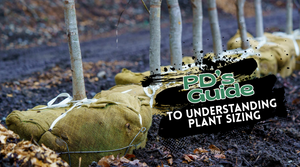
OUR SIZING
Not sure what 2 inch B&B or 30 Gallon Clump really means? This guide breaks down all our plant size terms so you know exactly what to expect, whether you're ordering online or picking up at our nursery. From caliper measurements to container volumes, we've decoded our system to help you shop with confidence.

Plant Detectives Shipping Guide
Nationwide plant shipping made easy. Learn how we ship trees, shrubs, annuals and perennials. No order too big or too small. Fast, careful, and contractor-friendly.

